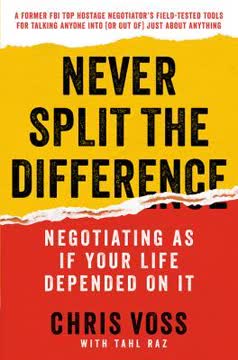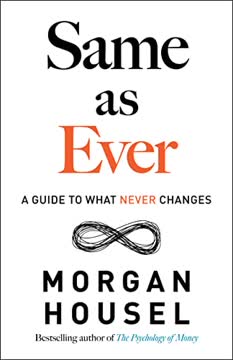Key Takeaways
1. Motivation is fueled by a sense of control and meaningful choices
"Motivation becomes easier when we transform a chore into a choice. Doing so gives us a sense of control."
Internal locus of control. People with a strong internal locus of control believe they can influence their destiny through their choices. This mindset correlates with higher self-motivation, social maturity, and professional success. To cultivate it:
- Make small, meaningful choices throughout your day
- Connect tasks to larger, meaningful goals
- Ask yourself "why" you're doing something to reinforce its importance
Self-determination theory. This psychological framework suggests that motivation thrives when we feel:
- Autonomy: Having control over our actions
- Competence: Feeling capable of achieving our goals
- Relatedness: Connecting our actions to a larger purpose or community
By framing tasks as choices that align with our values and long-term objectives, we can transform even mundane activities into sources of motivation and personal growth.
2. Psychological safety fosters effective teamwork and innovation
"We call it 'psychological safety,' a sense of confidence that the team will not embarrass, reject, or punish someone for speaking up."
Key components of psychological safety:
- Open communication: Team members feel comfortable sharing ideas and concerns
- Mutual respect: Diverse perspectives are valued and considered
- Trust: Mistakes are viewed as learning opportunities, not failures
- Equality in voice: Everyone has the opportunity to contribute
Benefits of psychological safety:
- Increased creativity and innovation
- Better problem-solving and decision-making
- Higher employee engagement and satisfaction
- Improved organizational learning and adaptability
Leaders can foster psychological safety by modeling vulnerability, encouraging healthy debate, and creating an environment where risk-taking and experimentation are rewarded. Regular team-building exercises and open feedback sessions can also help establish and maintain this crucial foundation for high-performing teams.
3. Mental models and disfluency enhance focus and learning
"You can think about your brain's attention span like a spotlight that can go wide and diffused, or tight and focused."
Mental models are internal representations of how things work. They help us:
- Predict outcomes
- Filter relevant information
- Make sense of complex situations
To build robust mental models:
- Actively visualize processes and scenarios
- Seek diverse experiences and perspectives
- Regularly challenge and update your assumptions
Disfluency is the act of making information harder to process, which paradoxically can improve learning and retention. Examples include:
- Handwriting notes instead of typing
- Explaining concepts to others in your own words
- Creating diagrams or visual representations of ideas
By combining mental models with disfluency techniques, we can enhance our ability to focus, learn, and adapt in rapidly changing environments. This approach helps us avoid cognitive tunneling – fixating on obvious stimuli at the expense of critical information – and enables more flexible, creative problem-solving.
4. Balancing stretch goals with SMART objectives drives achievement
"Stretch goals 'serve as jolting events that disrupt complacency and promote new ways of thinking.'"
Stretch goals are ambitious, seemingly out-of-reach objectives that:
- Spark innovation and creativity
- Challenge assumptions and limitations
- Motivate teams to think beyond incremental improvements
SMART goals are Specific, Measurable, Achievable, Relevant, and Time-bound objectives that:
- Provide clear direction and metrics for success
- Break down larger goals into manageable steps
- Help track progress and maintain momentum
The ideal approach combines both:
- Set an inspiring stretch goal to provide a long-term vision
- Develop a series of SMART goals to create a roadmap towards that vision
- Regularly review and adjust both types of goals as circumstances change
This balanced method helps organizations and individuals push boundaries while maintaining focus and motivation. It encourages innovative thinking while providing the structure necessary to turn ambitious dreams into concrete achievements.
5. Empowering employees through lean and agile methods boosts productivity
"Productivity emerges when people push themselves to think differently."
Lean principles focus on maximizing value while minimizing waste:
- Identify and eliminate non-value-adding activities
- Continuously improve processes
- Empower front-line workers to make decisions
Agile methodologies emphasize flexibility, collaboration, and rapid iteration:
- Break projects into small, manageable sprints
- Encourage frequent communication and feedback
- Adapt quickly to changing requirements or conditions
Benefits of lean and agile approaches:
- Increased efficiency and productivity
- Faster problem-solving and innovation
- Higher employee engagement and job satisfaction
- Improved customer satisfaction and product quality
By decentralizing decision-making and fostering a culture of continuous improvement, organizations can tap into the collective intelligence and creativity of their workforce. This approach not only leads to better outcomes but also creates a more dynamic, resilient, and adaptable organization.
6. Probabilistic thinking improves decision-making under uncertainty
"Creativity is just connecting things. When you ask creative people how they did something, they feel a little guilty because they didn't really do it, they just saw something."
Probabilistic thinking involves:
- Considering multiple potential outcomes
- Assigning probabilities to each scenario
- Updating beliefs as new information becomes available
Benefits of probabilistic thinking:
- More accurate predictions and forecasts
- Better risk assessment and management
- Reduced cognitive biases in decision-making
- Increased adaptability to changing circumstances
To develop probabilistic thinking skills:
- Practice envisioning multiple futures for any given situation
- Seek out diverse information sources and perspectives
- Regularly update your beliefs based on new evidence
- Use tools like decision trees or Monte Carlo simulations for complex problems
By embracing uncertainty and thinking in terms of probabilities rather than absolutes, we can make more nuanced, flexible decisions that account for the complexity of real-world situations. This approach is particularly valuable in rapidly changing environments where traditional, deterministic thinking often falls short.
7. Transforming data into actionable knowledge requires engagement
"Every choice we make in life is an experiment."
Data absorption strategies:
- Active engagement: Manipulate and interact with information
- Storytelling: Create narratives to contextualize data
- Visualization: Represent data graphically to reveal patterns
- Experimentation: Test hypotheses and learn from outcomes
Overcoming information blindness:
- Break large datasets into manageable chunks
- Create mental models to organize and interpret information
- Use disfluency techniques to enhance retention and understanding
- Regularly review and update your knowledge base
By treating every decision as an experiment and actively engaging with the data around us, we can transform raw information into practical knowledge and insights. This approach helps us:
- Identify meaningful patterns and trends
- Make more informed decisions
- Continuously learn and adapt to new situations
- Develop a deeper understanding of complex systems and relationships
The key is to move beyond passive consumption of information and instead actively process, question, and apply the data we encounter in our personal and professional lives.
Last updated:
FAQ
What's Smarter Faster Better about?
- Focus on Productivity: The book explores the science of productivity, focusing on why some individuals and organizations achieve more than others.
- Eight Key Concepts: It delves into motivation, teams, focus, goal setting, managing others, decision making, innovation, and absorbing data.
- Real-World Examples: Charles Duhigg uses case studies from various fields to illustrate how these principles can be applied effectively.
- Framework for Improvement: Provides a framework for readers to improve productivity by recognizing and implementing specific strategies.
Why should I read Smarter Faster Better?
- Enhance Your Productivity: Offers scientifically-backed strategies to improve efficiency and effectiveness in both personal and professional contexts.
- Understand Human Behavior: Provides insights into motivation and decision-making processes, beneficial for personal and professional relationships.
- Engaging Narrative: Duhigg's storytelling approach makes complex concepts accessible and engaging, blending research, anecdotes, and practical advice.
What are the key takeaways of Smarter Faster Better?
- Motivation and Control: A sense of control is crucial for motivation, driving individuals to work harder.
- Psychological Safety in Teams: Teams perform better when members feel safe to express ideas without fear of judgment.
- Focus and Mental Models: Mental models help maintain focus and navigate complex situations effectively.
How does Smarter Faster Better define motivation?
- Control as a Key Factor: Motivation is influenced by the feeling of control over one’s actions and environment.
- Biological Imperative: The need for control is a biological imperative, enhancing effort and overcoming challenges.
- Practical Applications: Strategies include making choices that reinforce a sense of control, empowering individuals to achieve their goals.
What is the concept of "psychological safety" in Smarter Faster Better?
- Definition: Psychological safety is a shared belief that the group is a safe place for taking risks.
- Impact on Performance: Teams with psychological safety perform better due to open communication and collaboration.
- Examples: Illustrated through organizations like Google, where trust and support enhance team dynamics.
What specific methods does Smarter Faster Better recommend for improving productivity?
- Use of Mental Models: Visualizing tasks and anticipating challenges helps maintain focus and clarity.
- Setting SMART Goals: Emphasizes Specific, Measurable, Achievable, Relevant, and Time-bound goals for motivation and progress tracking.
- Embrace Disfluency: Engaging with information in a challenging way leads to deeper understanding and retention.
How does Smarter Faster Better address decision-making?
- Bayesian Thinking: Introduces Bayesian reasoning for updating beliefs based on new information, improving decision accuracy.
- Cognitive Biases: Discusses how recognizing biases can enhance forecasting abilities and rational choices.
- Practical Strategies: Techniques include creating mental models and practicing probabilistic thinking for better risk assessment.
What role do teams play in productivity according to Smarter Faster Better?
- Psychological Safety is Key: Teams perform better when members feel safe to share ideas and take risks.
- Diversity Enhances Performance: Diverse teams bring different perspectives, leading to creative solutions.
- Effective Communication: Clear communication and mutual respect are essential for maintaining a productive team dynamic.
What is the difference between SMART goals and stretch goals in Smarter Faster Better?
- SMART Goals Defined: Specific, Measurable, Achievable, Realistic, and Time-bound objectives provide clear direction.
- Stretch Goals Explained: Ambitious targets push individuals beyond comfort zones, encouraging innovative thinking.
- Importance of Both: Combining SMART and stretch goals leads to greater overall success by providing structure and inspiration.
How does Smarter Faster Better suggest we improve our focus?
- Build Mental Models: Visualizing tasks and outcomes helps maintain focus and clarity.
- Practice Disfluency: Engaging with information in a challenging manner enhances understanding and retention.
- Set Clear Goals: Establishing specific and achievable goals directs focus and energy toward meaningful tasks.
What role does innovation play in Smarter Faster Better?
- Culture of Experimentation: Encourages experimentation and risk-taking to foster innovation.
- Case Studies: Examples from companies like Disney and Pixar illustrate successful innovative environments.
- Balancing Risk and Reward: Emphasizes the importance of balancing potential risks with rewards to unlock new possibilities.
What are the best quotes from Smarter Faster Better and what do they mean?
- “Productivity is about making certain choices in certain ways.”: Highlights that productivity is about informed decisions leading to meaningful outcomes.
- “The way we choose to see ourselves and frame daily decisions…separate the merely busy from the genuinely productive.”: Emphasizes the role of mindset in achieving true productivity.
- “The best teams succeed when everyone feels like they can speak up.”: Underscores the significance of psychological safety in team dynamics for better collaboration and innovation.
Review Summary
Smarter Faster Better receives mixed reviews. Many praise Duhigg's storytelling and insightful anecdotes, finding the book engaging and informative. Readers appreciate the practical advice on productivity and decision-making. However, some criticize the book for lacking cohesion and presenting familiar ideas. Several reviewers note that while individual chapters are interesting, the overall narrative feels disjointed. Some find the concepts difficult to apply personally. Despite these critiques, many readers still recommend the book for its thought-provoking content and well-researched examples.
Similar Books










Download PDF
Download EPUB
.epub digital book format is ideal for reading ebooks on phones, tablets, and e-readers.







